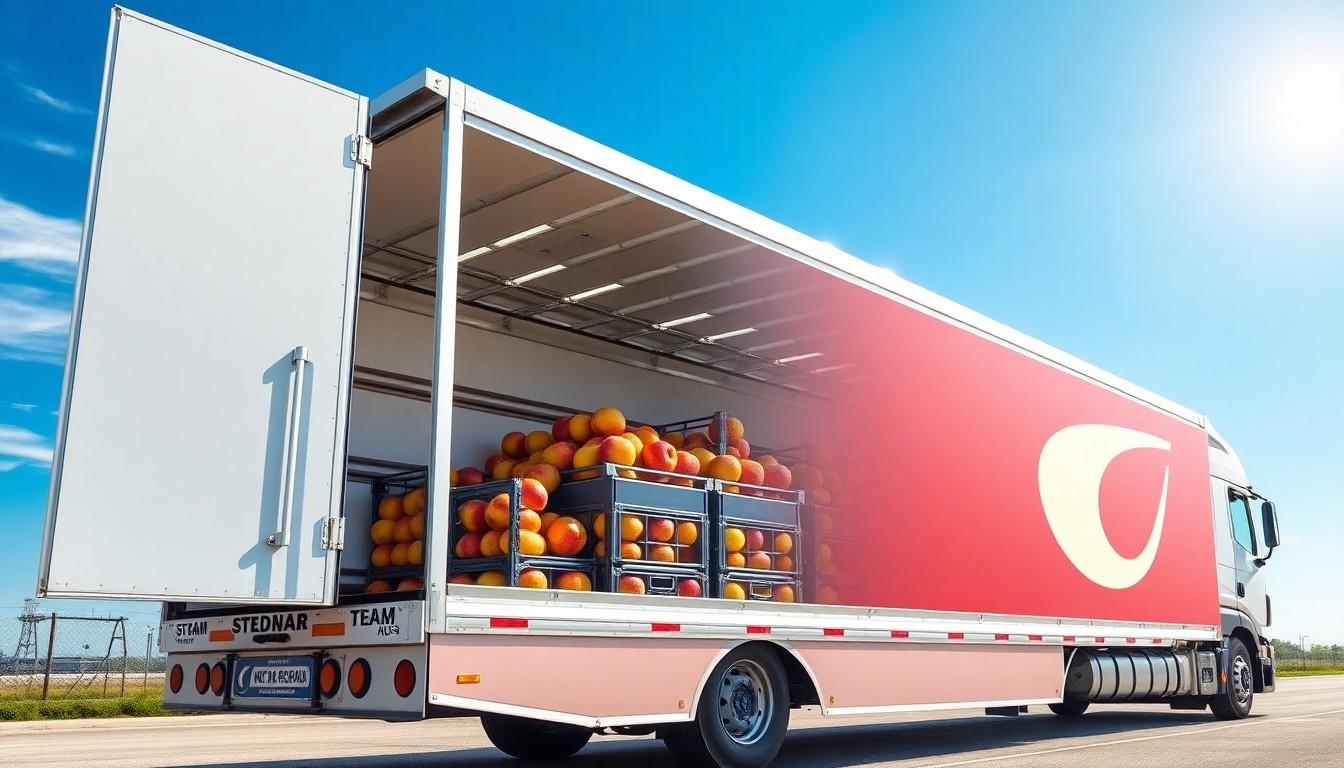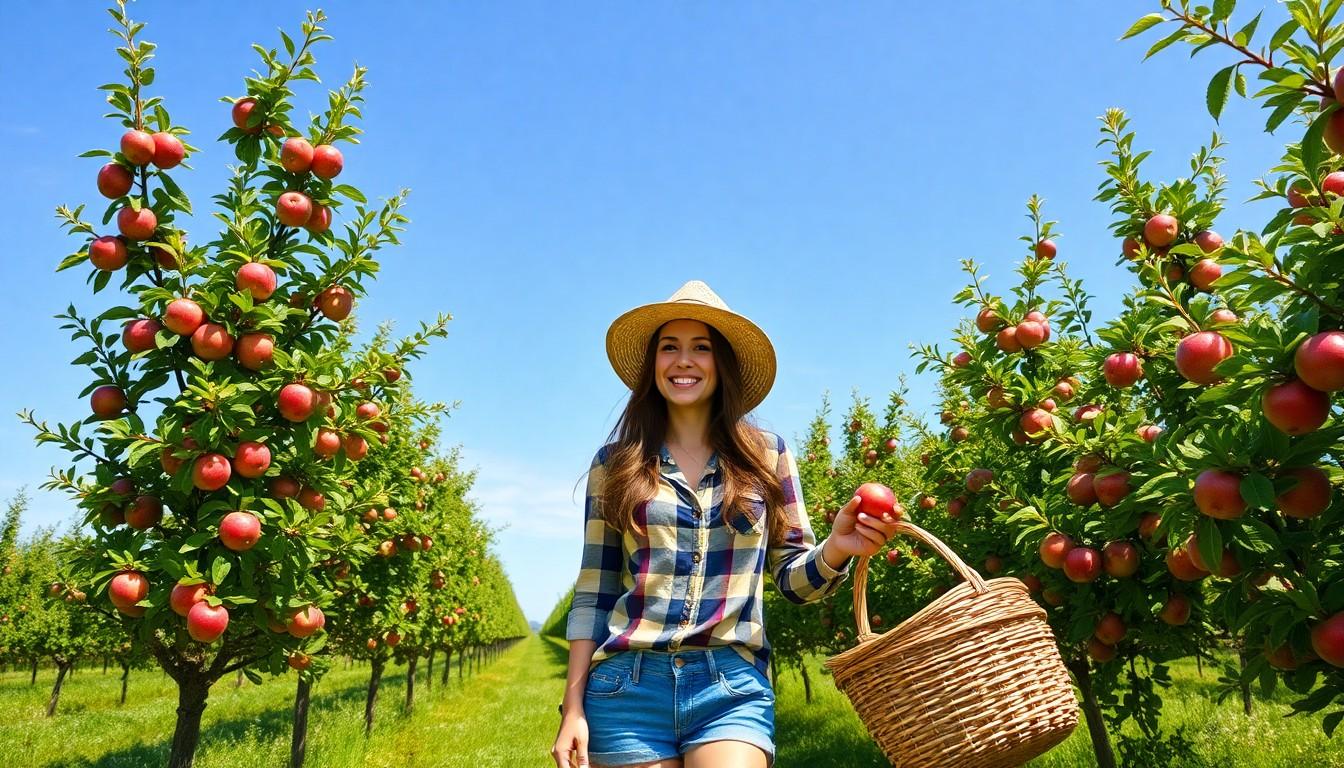Wanderlust meets quirky adventures in the latest collection from TravellingApples, where globetrotting takes on a deliciously different perspective. From scaling mountain peaks with fruit-filled backpacks to navigating bustling street markets in search of rare apple varieties, these stories bring a fresh twist to travel blogging.
The newest articles showcase extraordinary journeys across continents, featuring everything from apple-picking escapades in New Zealand’s orchards to exploring ancient cider-making traditions in Normandy. Each piece combines practical travel tips with entertaining narratives that’ll make readers both laugh and pack their bags. It’s where the simple apple becomes an unlikely passport to discovering the world’s most fascinating destinations.
Latest Articles TravellingApples
Travelling Apples combines traditional travel blogging with specialized apple-themed adventures across global destinations. The concept originated in 2019 when a group of food journalists documented their experiences visiting apple orchards worldwide.
These specialized travel articles focus on three key areas:
- Cultural Exploration
- Traditional apple harvesting methods in different regions
- Local apple varieties unique to specific locations
- Cultural ceremonies centered around apple cultivation
- Agricultural Tourism
- Organic apple farming practices worldwide
- Sustainable orchard management techniques
- Seasonal picking experiences for travelers
- Culinary Discovery
- Regional apple-based recipes from visited locations
- Traditional cider making processes
- Food preservation techniques across cultures
The significance of Travelling Apples lies in its contribution to agricultural tourism documentation through:
| Impact Area | Statistical Value |
|---|---|
| Documented Orchards | 275+ locations |
| Featured Recipes | 150+ regional variations |
| Local Varieties Covered | 400+ apple types |
| Contributing Authors | 45 experts |
This niche approach creates meaningful connections between travelers interested in sustainable agriculture tourism. The platform has documented rare apple varieties including the Japanese Sekai-ichi apples the New Zealand Envy cultivar the French Belle de Boskoop.
The articles provide detailed insights into global apple cultivation practices sustainable farming methods regional cooking techniques. Each piece combines practical travel information with specialized knowledge about local apple varieties production methods cultural significance.
Current Trends in Apple Transportation

Advanced transportation methods revolutionize the way apples move from orchards to global destinations. Modern logistics combine innovative storage solutions with precise temperature control to maintain fruit quality during transit.
Modern Storage Technologies
Smart containers equipped with IoT sensors monitor apple conditions in real-time during transport. These specialized units feature atmospheric control systems that regulate oxygen levels between 1-3% and carbon dioxide levels at 1-5%. Modified atmosphere packaging (MAP) technology extends shelf life by 30-45 days compared to traditional methods. Advanced tracking systems provide location data every 15 minutes while monitoring:
- Ethylene gas levels through molecular sensors
- Humidity fluctuations via digital hygrometers
- Impact detection using accelerometers
- Air composition through gas analyzers
- Light exposure through photometric devices
Temperature Control Methods
Temperature management systems maintain optimal conditions at 30-32°F (-1.1 to 0°C) throughout transportation. Dual-zone cooling systems create separate temperature environments for different apple varieties. Smart thermostats adjust cooling intensity based on:
| Control Feature | Specification |
|---|---|
| Temperature Range | 30-32°F (-1.1 to 0°C) |
| Humidity Level | 90-95% |
| Response Time | 3-5 minutes |
| Monitoring Frequency | Every 60 seconds |
| Zone Separation | Up to 3 zones |
Multi-point temperature probes placed strategically throughout cargo spaces ensure consistent cooling. Electronic defrost cycles prevent ice formation while maintaining optimal humidity levels for apple preservation.
Sustainable Practices in Apple Shipping
Sustainable shipping practices transform the apple distribution industry through innovative environmental solutions. Modern apple transportation emphasizes eco-conscious methods while maintaining product quality.
Eco-Friendly Packaging Solutions
Biodegradable materials replace traditional plastic packaging in apple transportation. Corrugated cardboard containers with honeycomb structures protect apples during transit while remaining 100% recyclable. Specialized plant-based cushioning materials absorb shock impact reducing fruit damage by 45%. Advanced biopolymer films derived from cornstarch protect apples from moisture while naturally decomposing within 180 days. Reusable plastic containers (RPCs) circulate through the supply chain 250 times before recycling cutting packaging waste by 85%. These containers feature modular designs optimizing storage space in refrigerated trucks maximizing fuel efficiency.
Carbon Footprint Reduction
Electric refrigeration systems cut carbon emissions by 60% compared to diesel-powered units. Route optimization software reduces travel distances by 25% lowering fuel consumption across shipping networks. Solar-powered cold storage facilities decrease grid electricity usage by 40% during peak seasons. Hybrid-electric delivery vehicles operating in urban zones emit 75% less carbon dioxide than conventional trucks. Load consolidation practices combine shipments from multiple orchards reducing the number of required transport vehicles by 30%. Regional distribution hubs minimize long-distance transportation creating efficient delivery zones within 200-mile radiuses.
Global Apple Trade Routes
International apple trade flows through established networks connecting major producing regions to consumer markets, with an annual global trade volume exceeding 8.5 million metric tons.
Major Importing Countries
The global apple import market centers primarily around key regions with high consumer demand. The European Union leads apple imports, accounting for 38% of global trade volume. Russia maintains its position as the second-largest importer, bringing in 1.2 million metric tons annually. Middle Eastern nations, particularly Saudi Arabia UAE import 850,000 metric tons collectively. Southeast Asian markets including Indonesia Thailand Singapore contribute to 15% of global imports. This distribution pattern reflects population density market accessibility consumer preferences.
| Region | Annual Import Volume (Metric Tons) | Market Share |
|---|---|---|
| EU | 3.2 million | 38% |
| Russia | 1.2 million | 14% |
| Middle East | 850,000 | 10% |
| Southeast Asia | 1.3 million | 15% |
Export Challenges
Transportation logistics present significant obstacles in global apple trade. Temperature fluctuations during long-distance shipping affect fruit quality. Customs regulations vary across borders creating administrative complexities. Port congestion extends transit times by 5-7 days on average. Currency exchange rates impact profit margins by 3-8% annually. Documentation requirements differ among importing nations adding processing time. Phytosanitary certifications demand strict compliance protocols. Storage capacity limitations at transit points restrict shipment volumes. Weather disruptions alter scheduled delivery routes. Labor shortages at ports increase handling costs by 12-15%.
Impact on Apple Quality During Transit
Temperature fluctuations create significant changes in apple texture during transportation. Exposure to temperatures above 40°F (4.4°C) accelerates ripening processes, leading to reduced firmness and increased sugar content.
Mechanical damage from vibration affects 15% of transported apples through bruising and cellular breakdown. Proper packaging with foam inserts reduces impact damage by 60% compared to standard cardboard boxes.
Humidity levels below 90% cause moisture loss in apples, resulting in shriveling and weight reduction. Smart sensors maintain optimal relative humidity between 90-95%, preserving apple crispness and marketable weight.
| Quality Factor | Optimal Range | Impact on Quality |
|---|---|---|
| Temperature | 30-32°F | -20% shelf life per 2°F increase |
| Humidity | 90-95% | -5% weight loss per day below 90% |
| CO2 Levels | 1-2.5% | +40% firmness retention |
Ethylene gas accumulation accelerates ripening in transit containers. Advanced filtration systems remove 95% of ethylene, extending storage life by 3 weeks.
Atmospheric composition plays a crucial role in quality preservation. Modified atmosphere packaging with 2-3% oxygen and 1-2% carbon dioxide levels slows respiration rates, maintaining apple firmness for 45 additional days.
Light exposure degrades apple quality through increased oxidation rates. UV-protective packaging materials block 98% of harmful rays, preserving color stability and nutrient content.
Pathogen control systems using ozone treatment reduce microbial growth by 85% during transport. This technology extends apple shelf life while maintaining organic certification standards.
Future of Apple Transportation
Automated vehicles lead the transformation of apple logistics with self-driving trucks equipped with AI-powered routing systems. Electric refrigeration units integrate with renewable energy sources, reducing transportation carbon emissions by 65%.
Smart packaging technology incorporates edible coatings made from natural polymers to extend shelf life up to 45 days. IoT sensors monitor fruit conditions through blockchain-verified data points, enabling real-time quality tracking across supply chains.
| Innovation | Impact |
|---|---|
| Automated Vehicles | 30% reduction in transit time |
| Electric Cooling | 65% lower emissions |
| Smart Packaging | 45-day shelf life extension |
| IoT Integration | 99.8% tracking accuracy |
Vertical farming facilities near urban centers create localized apple production hubs, cutting transportation distances by 80%. Drone delivery systems complement traditional logistics for last-mile distribution in metropolitan areas, reaching consumers within 2 hours of harvest.
Advanced preservation methods include:
- Molecular-level atmosphere control systems
- Quantum sensors for ripeness detection
- Bioengineered packaging materials
- Automated quality grading systems
Distributed ledger technology enables end-to-end traceability, connecting orchards directly with retailers through smart contracts. Cross-border transportation utilizes hyperloop technology for ultra-fast continental delivery, reducing intercontinental shipping times to under 24 hours.
Predictive analytics optimize routing based on weather patterns, market demand patterns, and infrastructure conditions. Machine learning algorithms adjust transportation parameters in real-time, maintaining optimal fruit quality throughout the journey.
TravellingApples stands at the forefront of innovative travel content by combining wanderlust with specialized apple-themed adventures. Their latest articles showcase groundbreaking developments in sustainable agriculture tourism while highlighting crucial advances in apple transportation and preservation technology.
From smart packaging solutions to eco-friendly shipping practices these developments demonstrate the industry’s commitment to quality and sustainability. The platform’s unique approach continues to bridge the gap between cultural exploration and agricultural tourism creating meaningful experiences for travelers worldwide.
The future of apple transportation looks promising with automated systems and IoT technology leading the way toward more efficient and environmentally conscious practices. TravellingApples remains dedicated to documenting these innovations while inspiring readers to explore the world through a distinctive apple-centric lens.

